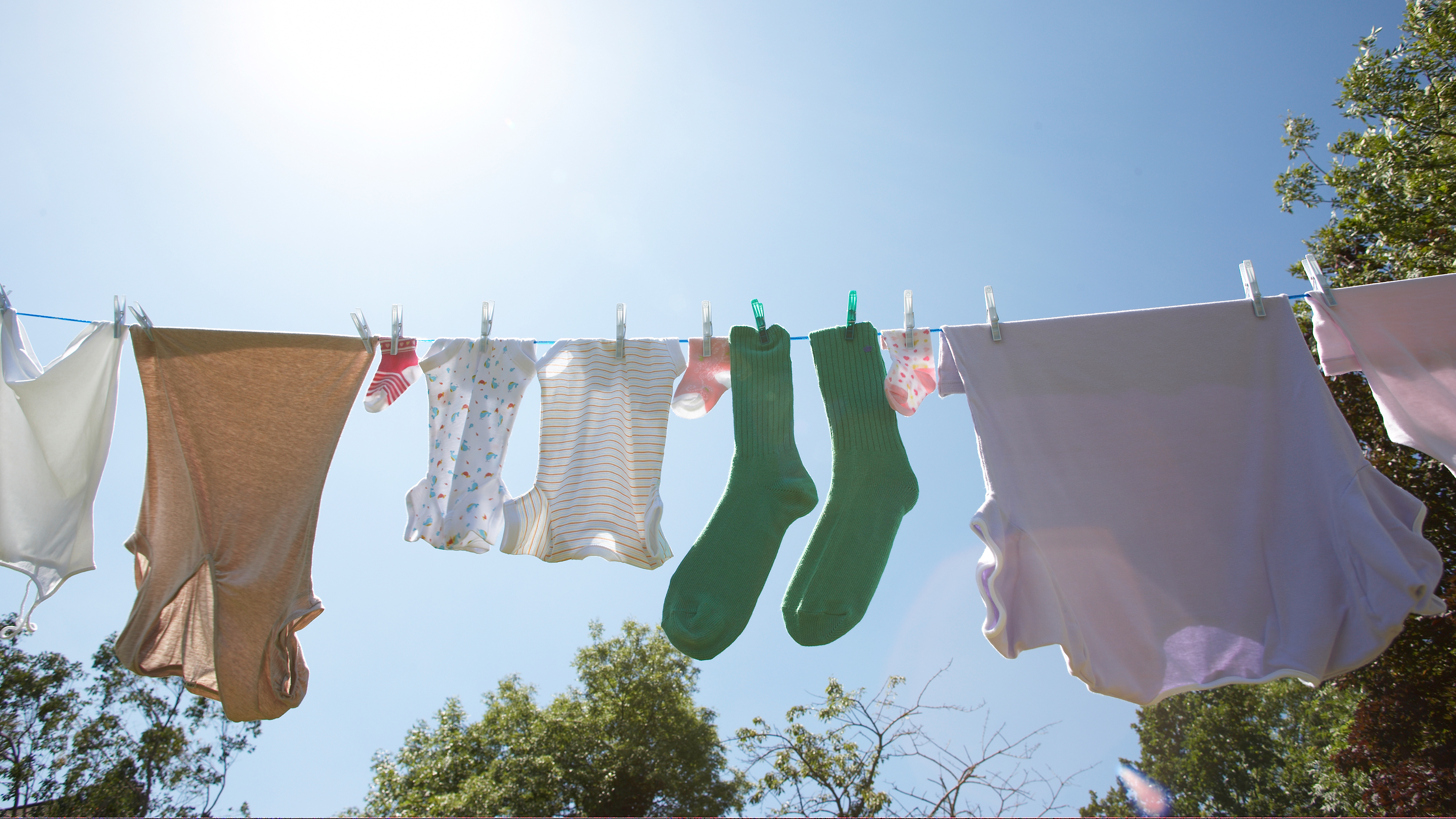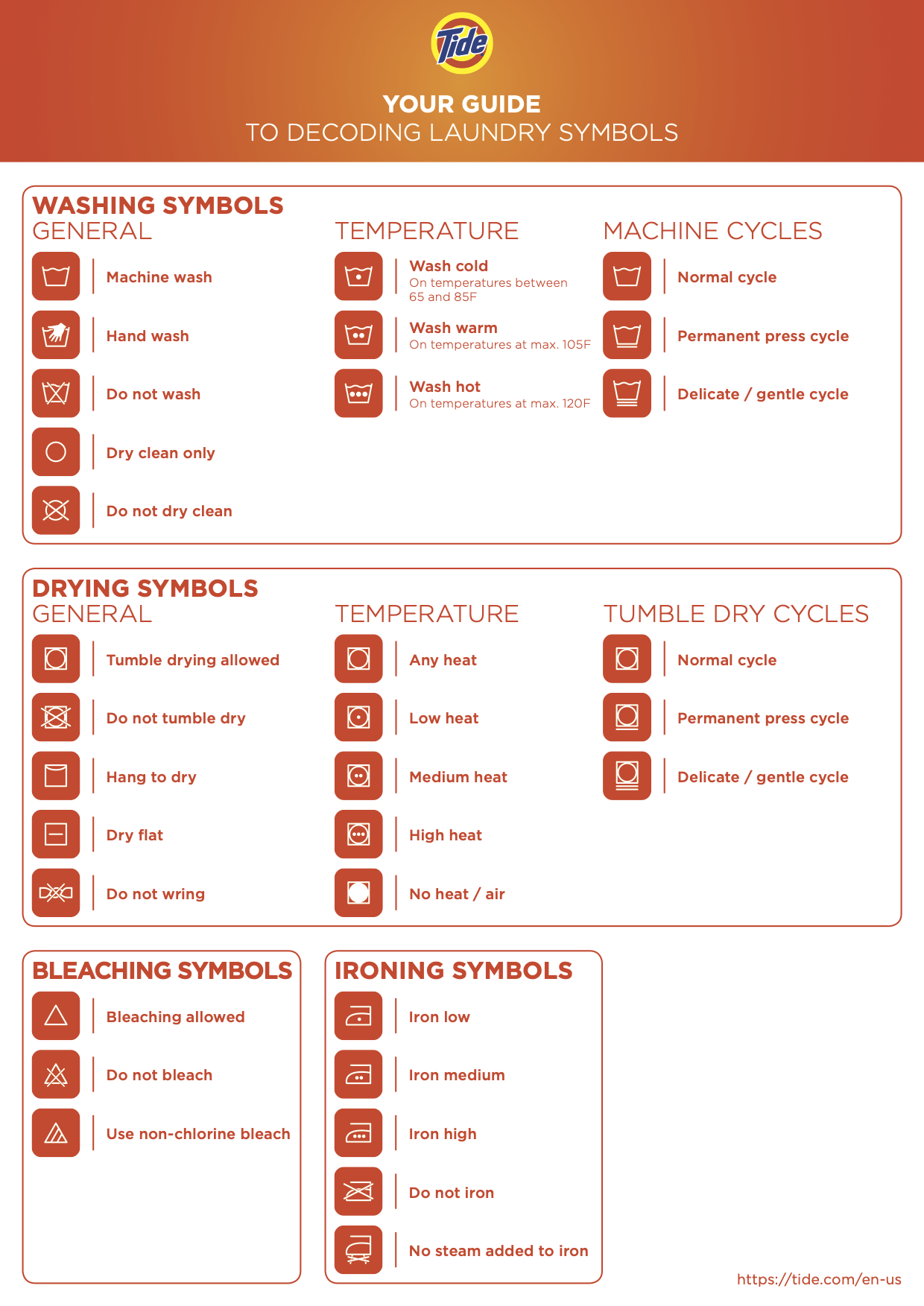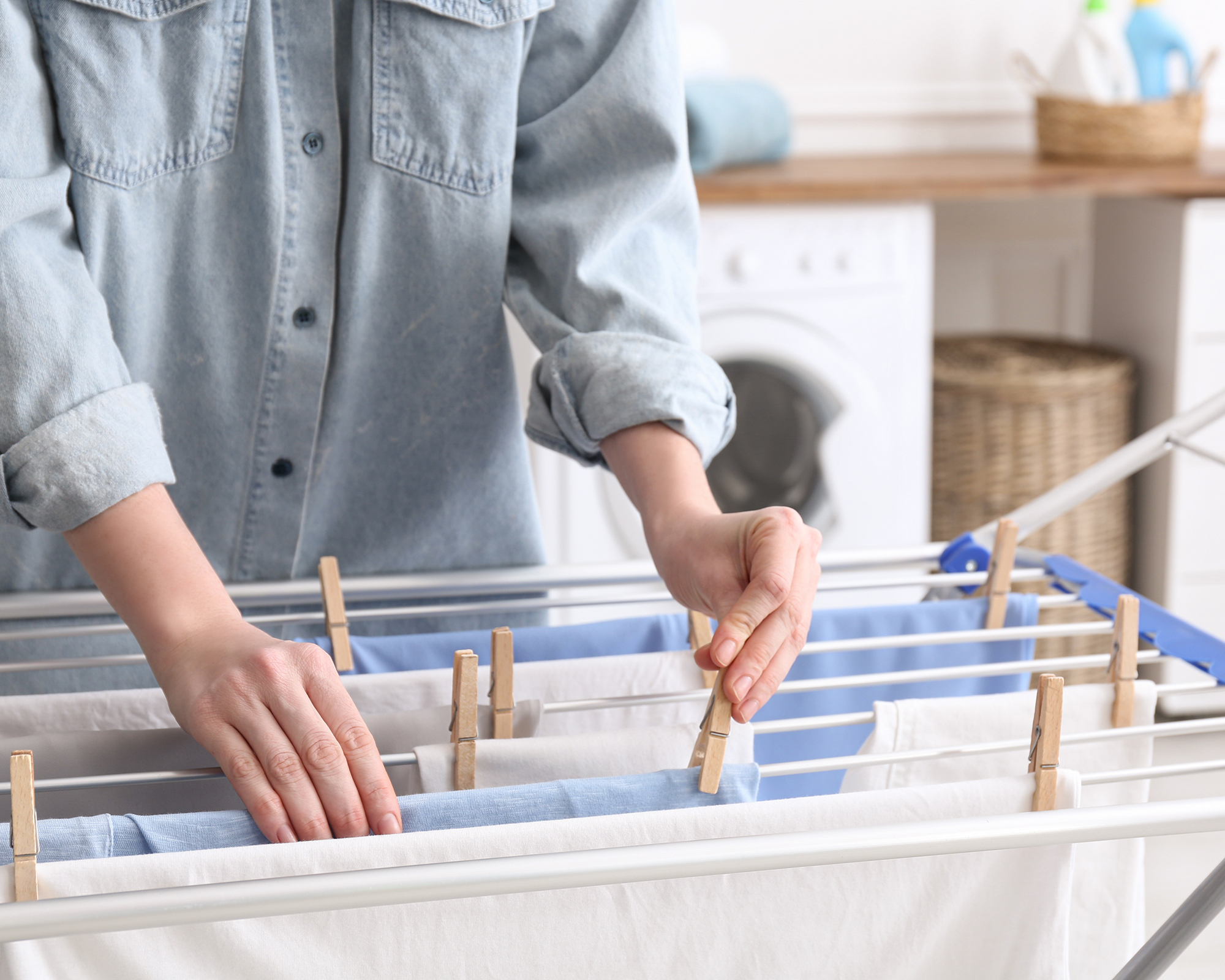What is laundry stripping? How to strip clothing naturally, with or without borax
Laundry stripping involves submerging clothing in a cleaning solution to remove residue. This step-by-step will show you how to strip washing effectively.


If you're seeing and hearing the phrase laundry stripping everywhere and wondering what it means, we're here to clear up the jargon, and give you the scoop on why dousing your linens in a cleaning formula is the way forward.
Essentially, stripping your laundry involves soaking your clean clothing and homeware to get rid of dirt, debris, and any excess detergent and fabric conditioner. For instance, you may have spotted white patches or residue on your towels and exercise gear. But don't sweat – it might also be hard water build-up, and this technique will tackle it.
Even after using your best washing machine, clothing and fabric can still retain remnants of cleaning products, and even body oils and lotion (yes, even after you've put it through the wash)... Gross.
This washroom hack does take a couple of hours, but you don't need to stand by and keep watch once you've got your hands on the special laundry stripping recipe. All you'll need to do is stir the contents of your tub or sink and watch your water go from clear to (satisfyingly) murky. Then, you'll use your front or top-loading machine and set it to rinse... no washing pods or laundry detergent required!
What is laundry stripping?
'Laundry stripping is a process of removing built-up grime, detergent, and conditioner from fabrics,' explains Sam Whigham AKA Mr. Clean and founder of eco laundry brand Wilton London.
'It can be a good way to deep clean tired fabrics or fabrics that get heavy use. It’s great if you’re switching detergent brands or switching to a greener detergent brand,'
'Stripping laundry will help remove the chemicals and scents built up from your previous detergent brand, so you can start fresh. It’s gained a lot of popularity on social media with baths full of murky water after soaking. I tend to use this cleaning method at home, after summer. It’s a good way to give clothes and sheets a deep clean from grime, sun cream, and sweat from laundry.'
Get small space home decor ideas, celeb inspiration, DIY tips and more, straight to your inbox!
How to strip laundry with or without borax
Laundry stripping recipe and equipment list:
1. Your washing machine
2. A basket of clean laundry (sorted by color)
3. A clean bathtub (or kitchen sink/bathroom basin)
4. Your best washing powder
5. Borax: buy it on Amazon
6. Washing soda: Arm & Hammer sells it on Amazon
6. An old wooden spoon: or buy a cheap KitchenAid one
7. A clothes horse or washer dryer
8. Access to hot water: via kitchen faucets, bathroom tap, or your kettle
9. A measuring jug/bowl: try this vessel from OXO
10. Rubber gloves (optional): Marigold's are our fave
11. A bucketor laundry basket: both available on Amazon
12. Baking soda (optional): also known as bicarb
13. An oven(optional)
14. A moisturizing handwash: choose something without Sodium Laureth Sulphate as this dries your hands
1. Assess your laundry for suitability
You'll want to make sure your fabrics can withstand high hot water temperatures and can be wrung dry. Look at the labels on the bits and bobs you want to submerge first to see if they're a suitable candidate for this treatment.

2. Prepare the laundry stripping solution
In a measuring jug (or old bowl), mix together 1/4 cup borax, 1/4 cup of washing soda, and 1/2 cup of laundry detergent.
If you'd rather spring clean naturally, it is possible to strip your laundry without using harsh chemicals. By using an eco-friendly laundry powder (like Molly's Suds laundry powder in peppermint), Borax (it's sodium tetraborate, a naturally occurring mineral after all), you're almost there.
But what about the missing element of washing soda? Although washing soda isn't inherently 'bad', the term soda might be off-putting. So instead of buying it from the store, you can DIY your own by baking, baking soda.
Nope, that's not a typo – by blasting baking soda in your oven (200C/392F) for 30-60 mins, you'll change the chemical structure. Essentially drawing out the water will turn your bicarb raising agent into a laundry aid.
Still missing an ingredient in your laundry stripping recipe? You can leave off an item off your shopping list – just know that the solution might not perform as optimally as you'd like it to.
'If you do not have borax or washing soda you can make it without one of them. But, I find that they really do work together to give the best results,' assures Cari Dunn, DIYer and blog author at Koti Beth.
3. Add to your chosen vessel with hot water
Decant the powdered mixture into your chosen vessel (be it the bathtub, kitchen sink, or bathroom basin. Fill the container with the hottest water that your fabrics can tolerate, and mix well with an old wooden spoon.
Note: this treatment isn't suitable for washing silk since this delicate material should be laundered at temperatures 30C/86F or less.
4. Soak your laundry items
Throw in your best bath towels, bed sheets, gym leggings plus any other items you want to deep clean and let them soak for 4-5 hours, stirring every now and then with your spoon.
'Some of my yoga leggings get hard water build up on them and don't hold their stretch. They kind of get pilly and gross,' says Sarah McAllister, cleanfluencer and director of Go Clean Co.
'So you can do this to any laundry that's really dirty, people strip cloth diapers, you can do it to hockey equipment, there's a lot of things you can do it to. You can do bedding, towels, clean a rug, playpens, high chairs, etc., etc. You need to separate colors. Do not make me yell at you for separating laundry.'
5. Remove items from the cleaning solution
Take your textiles out of the tub or sink and wring them to draw out all of the water. Drain your tub/sink and give it a good rinse down. The most efficient way to do this is by using a high-pressure shower head which will help clean your bathtub quickly.
6. Transfer the wet laundry to the washing machine
Use a bucket or laundry basket to transfer your wet articles to your washing machine. You'll then want to use the rinse program (without detergent/fabric softener). If you're not sure which function to select, check out our washing symbol guide which can help you to figure it out.
7. Dry your washing
Take your clothing and/or homeware out of the washing machine and dry it as you normally would. This might include hanging the objects over the radiator, out on your washing line (if the weather's good), using a clothes horse, or, accelerating the drying process with a washer dryer or heated towel rack. There are of course other ways to dry clothes without a dryer.

8. Wash your hands
If you haven't opted for Marigolds or any other brand of rubber gloves – wash your hands with a moisturizing handwash (nope, dish soap doesn't count!). All of the aforementioned ingredients are quite alkaline and can irritate your skin if left on your body for a long period of time, especially if you have eczema or another dermatological condition.
Why shouId I strip laundry?
'Laundry stripping is only really needed on ‘heavy use’ items. Towels and bed sheets are prime examples – think about all that time you spend in your bed,' says Whigham.
'But don’t be fooled by the images on social media of dark murky water. The laundry stripping process doesn’t just strip dirt and grime, it can also strip colors. Those shots on social media of really mucky water after stripping – it’s mostly color from the fabrics. So laundry stripping is best suited to light and white fabrics to maintain color.'
While Tim Dunphy, a water expert at Leaf Home Water Solutions says: A survey found that most Americans (55%) have never had their homes tested for hard water and its potential damage to their laundry and homes,'
'If your washing machine is not using water that’s been softened, your laundry may be plagued by the effects of hard water, which leaves behind mineral deposits that make laundry look and feel lackluster over time.'
'We always recommend addressing the home’s water proactively for the health of both your laundry and your washing machine. When that’s not possible, laundry stripping can help address hard water’s effects on laundry.'
And Nick Moss, social media manager, Astonish adds: 'Sometimes people with sensitivity/allergies may benefit from stripping to remove residual products/deep clean. Astonish Oxy Active Non Bio can be used to 'strip' laundry if you wash as normal on 40-60 celsius (104-140F), without adding any detergent or fabric softener.'
How often should you strip laundry?
'You shouldn’t have to do it often, maybe once a year,' advises Whigham.
'But it really does depend on your usage of the fabrics and your usage of laundry detergents. Many mainstream brands of detergents have lots of ingredients that are designed to stick to your fabrics.'
'For example, optical brighteners are designed to create the illusion of whiter whites. But they’re also known for their harmful effects on the environment. Many other mainstream brands use blue dyes too, this is also designed to stick to fabrics to again help create the illusion of whiteness (I know, doesn’t make much sense), a laundry strip should remove these from your clothes.'
And Dunphy adds: 'Stripping laundry should be a last-resort tactic, as the need for it is typically caused by mineral deposits in your water, or hard water – and it can be prevented. If you discover you have hard water, I recommend proactively addressing all the water in the home with a water softener, as over time hard water will begin to degrade your appliances and pipes and cost you more money in frequent repairs and replacements.'
'If you must strip laundry, you should only do so a few times a year. While an effective tool to address fading, discoloration, and buildup, laundry stripping can be too much of a good thing and eventually cause damage to fabrics. To know when it’s time to strip laundry, rely on your senses.'
'Towels should not feel sticky, sound squeaky, or have lost their absorbency, and sheets should not have lost their softness. Do your linens or clothes have a stale odor or an unusually dingy appearance? It may be time to consider stripping those items.'

Hi, I'm the former acting head ecommerce editor at Real Homes. Prior to working for the Future plc family, I've worked on a number of consumer events including the Ideal Home Show, Grand Designs Live, and Good Homes Magazine. With a first class degree from Keele University, and a plethora of experience in digital marketing, editorial, and social media, I have an eye for what should be in your shopping basket and have gone through the internal customer advisor accreditation process.